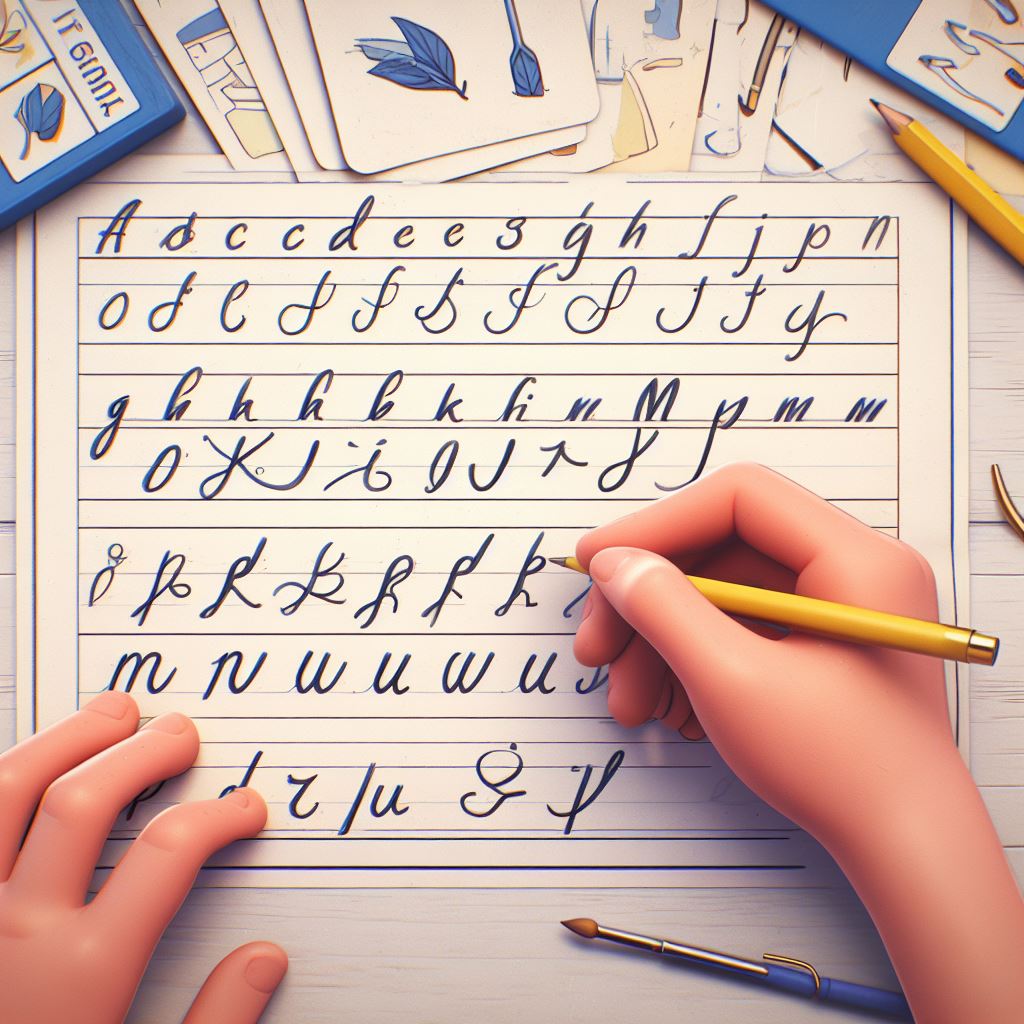A Step-by-Step Guide on How to Write in Cursive
Rediscovering the Art of Elegant Handwriting
In an era dominated by digital communication, the art of cursive writing adds a touch of elegance and personality to your words. Whether you’re learning cursive for the first time or seeking to refine your skills, this step-by-step guide will help you master the graceful and flowing strokes of cursive writing.

1. Understand Cursive Basics: Embracing Flowing Connectivity
Cursive writing is characterized by connected letters that flow smoothly into one another. Understand the fundamental principle of maintaining a continuous flow, avoiding the separate strokes commonly seen in print handwriting.
2. Choose the Right Tools: Optimal Instruments for Fluidity
Select the right tools for cursive writing. A smooth-flowing pen or pencil with a comfortable grip can make a significant difference. Experiment with different writing instruments to find the one that suits your hand and writing style best.
3. Master Cursive Letter Forms: Emphasizing Consistency
Learn the individual letter forms in cursive. Pay attention to the slant, size, and height of each letter. Consistency in letter formation is key to achieving a polished and professional cursive style.
4. Practice Basic Strokes: Building Muscle Memory
Before diving into complete words, practice the basic cursive strokes. Focus on upward and downward strokes, loops, and connections. Building muscle memory with these foundational movements lays the groundwork for fluid cursive writing.
5. Practice Letter Combinations: Creating Flow
Once comfortable with individual letters, practice combining them into pairs and short words. Emphasize the natural flow between letters, maintaining consistent spacing and slant. Gradually increase the complexity of the letter combinations as your confidence grows.
6. Master Cursive Connections: Seamless Transitions
Cursive is distinguished by the smooth connections between letters. Pay attention to how each letter flows into the next. Practice connecting different letter pairs to ensure seamless transitions and a continuous rhythm.
7. Focus on Word Spacing: Achieving Balance
Maintain even spacing between words to achieve a balanced and visually pleasing cursive script. Avoid overcrowding or stretching words unnaturally. Consistent word spacing enhances the overall aesthetic of your cursive writing.
8. Develop Your Signature Style: Personalizing Your Cursive
Cursive writing allows for personal expression and style. Experiment with variations in letter slant, size, and embellishments to develop your unique cursive signature. Your cursive writing should reflect your personality and preferences.
9. Practice Regularly: Building Proficiency Over Time
Like any skill, cursive writing improves with practice. Set aside dedicated time for regular practice sessions. Consistent practice builds muscle memory, refines your technique, and enhances the fluidity of your cursive script.
10. Explore Cursive Fonts: Drawing Inspiration
Explore various cursive fonts for inspiration. Analyze different styles, paying attention to the nuances in letter shapes and connections. Drawing inspiration from diverse cursive fonts can inform and enhance your own cursive writing style.
Conclusion: Embracing the Timeless Art
In conclusion, mastering cursive writing is a journey of elegance and self-expression. By understanding the basics, practicing diligently, and infusing your unique style, you can rediscover the timeless art of cursive writing. Whether you’re crafting handwritten letters or simply adding a personal touch to your notes, the beauty of cursive lies in the graceful strokes that transform words into a visual masterpiece.


